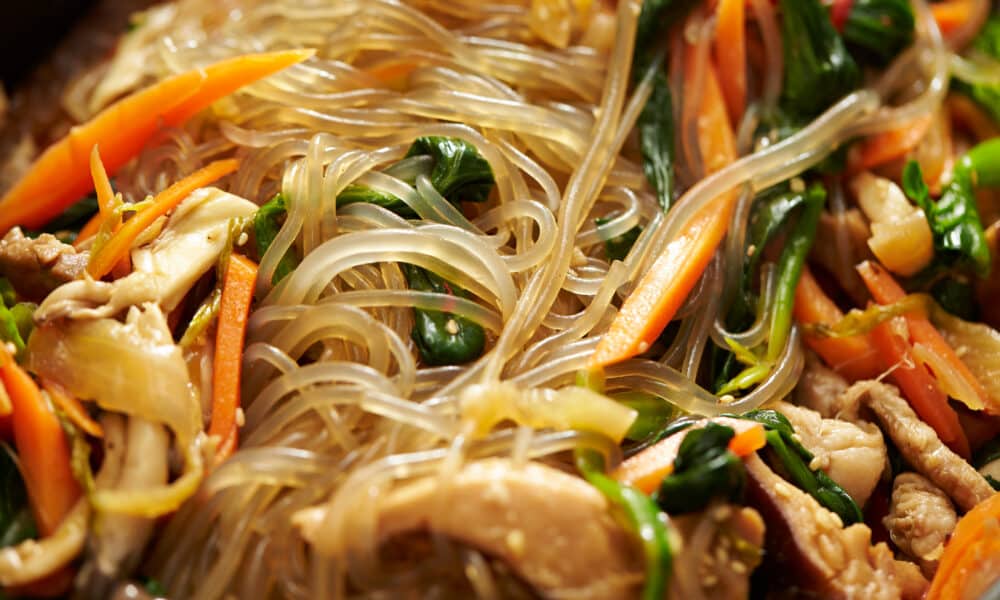


Noodles are a culinary staple enjoyed by people across the globe, but not all noodles are the same. Some, like “crystal noodles,” come with a unique name and an intriguing history that sets them apart. These translucent, gelatinous noodles are not only a treat for the taste buds but also a testament to the diversity of the world’s noodle offerings. That’s why this month, we’re exploring the origins and traditions of this dish! And in the meantime when you’re looking for the best Thai food in MA, you’re always welcome at White Coconut Thai Restaurant!
Crystal noodles, also known by names like “glass noodles,” “cellophane noodles,” “dangmyeon,” “harusame,” and even “woonsen” in Thai, are a type of noodle that hail from various Asian cuisines, including Chinese, Korean, Japanese, and Thai. What makes them truly distinctive is their transparent or semi-transparent appearance, which resembles crystals. But how did these unique noodles come into existence?
The story of crystal noodles begins with the choice of ingredients. Unlike traditional wheat-based noodles, crystal noodles are typically made from various starches, such as mung bean starch, potato starch, sweet potato starch, or even cassava starch, in the case of Thai woon sen. These starches give the noodles their signature texture and appearance. The preparation process involves mixing the starch with water and then shaping the resulting dough into thin, translucent strands. They are then cut to the desired length and either sun-dried or parboiled.
In Thai cuisine, woon sen is a popular ingredient in dishes such as Yum Woon Sen, a refreshing glass noodle salad with a zesty lime dressing, and Tom Yum Goong, a spicy and sour shrimp soup featuring these delightful noodles. Thai cuisine expertly showcases the versatility of crystal noodles and their ability to absorb the rich, bold flavors of Thai herbs and spices.
While the term itself is not universally used, it’s widely recognized due to the noodles’ translucent appearance, which evokes the image of sparkling and transparent gemstones. In Thai cuisine, “woon sen” can be translated to “glass threads” or “clear threads,” which accurately reflects their appearance and ties into the theme of transparency.
The names “cellophane noodles” and “harusame” offer additional insights, as mentioned in the previous version of this blog. “Cellophane” is a type of transparent and glossy film, which bears a resemblance to the noodles’ appearance, and “harusame,” the Japanese name, translates to “spring rain,” emphasizing their transparent nature and culinary significance.
Whether you’re craving a dish with glass noodles, or are looking to explore all the delicious flavors of Thai cuisine, you can rest assured you’ll find some of the freshest Thai food in MA right at White Coconut. For more information on all of our food options, check out our online menu for more information today!